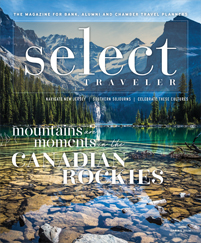Villages of Van Buren, Iowa
In southeast Iowa, the Villages of Van Buren are 11 quaint communities scattered along the Des Moines River where visitors will find antique shops, art galleries, artisan studios and Amish communities selling all sorts of handmade and handcrafted goods.
The Villages Folk School is a collective of artists and artisans who open the doors to their personal studios and private homes to showcase their work and show students the tricks of their individual trades.
The annual Southeast Iowa Artists’ Studio Tour is a self-guided tour through five Iowa counties to the studios of about 50 area artists to watch them create and to learn about their work.
The school can arrange for a variety of group classes and workshops. Guests can learn how to make a small, coaster-size weaving at a rug-weaving studio, assemble a stained-glass window or make container candles. The school can arrange for painting classes using pastels or watercolors or even schedule outdoor painting classes. There’s an instructor for every 10 students, who then work outdoors in rose gardens, at the pioneer museum or on the riverbanks painting old bridges. The school can also arrange for blacksmithing, woodcarving, weaving, drawing and pottery studio classes and demonstrations.
At the Calico Press, visitors can see historic presses that owner Mel Stockwell, also the Villages Folk School director, has restored and try their hand at printing their names.
Quincy, Illinois
The Quincy Society of Fine Arts was founded in 1947 in Quincy, making it the nation’s first community arts council, and the city has been producing and promoting art in the seven decades since.
The council, now known as Arts Quincy, works to increase access to public art, culture and entertainment for residents and visitors alike.
The Quincy Art Center displays and teaches art. The center’s permanent collection includes more than 400 pieces, and rotating exhibitions feature local, regional and national artists and even artwork from the center’s own teachers and students. The center has classroom space where the artists can lead workshops or teach hands-on classes on painting or pottery. The staff has made origami for events or provided artists to make German crafts during Oktoberfest, said Holly Cain, executive director of See Quincy. The center could also connect groups with local artists for in-studio demonstrations and tours.
“They’re very flexible, and they have adequate staff to help with anything a group would want to do,” she said.
The art center sits on the corner of 16th and Maine streets in Quincy’s East End Historic District. Without ever leaving that corner, groups could also tour two historic manors, eat lunch at the historic Women’s City Club and visit the Quincy Museum, which is housed in a historic mansion.
Architecture is one of Quincy’s most visible forms of art and one of its best assets, Cain said, and See Quincy offers private tours of 18 different homes.









